Late Constable: the final 12 years of a genius is celebrated by London’s Royal Academy
By James Brewer
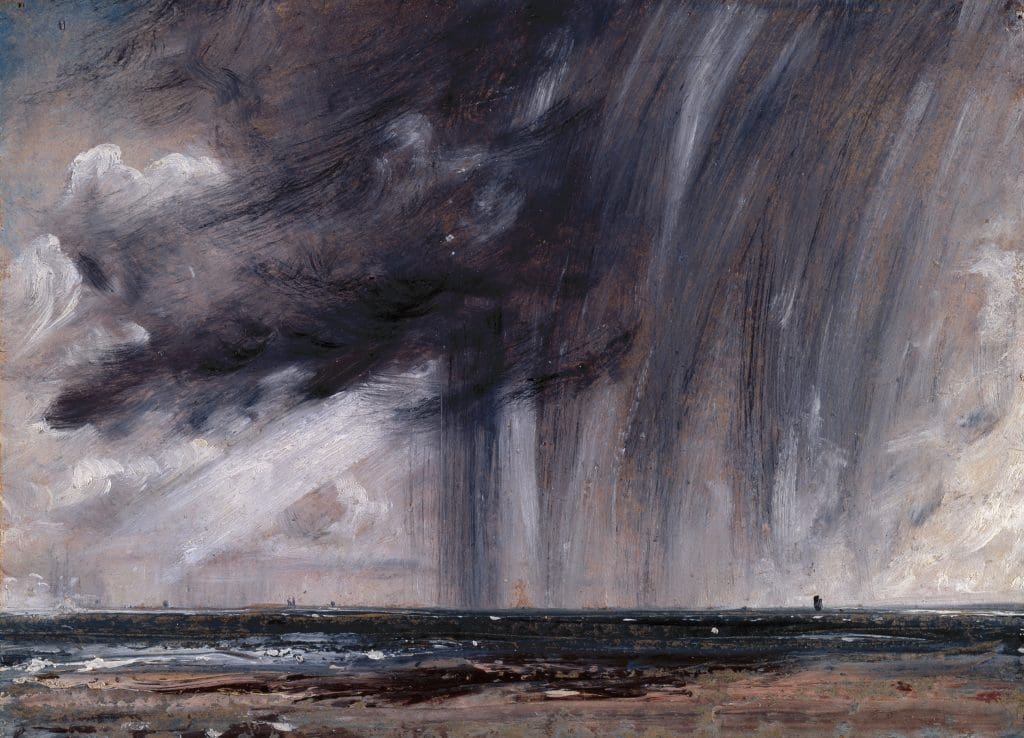
A modest-sized picture in the Royal Academy exhibition Late Constable is one of the show’s most significant, and one of its most poignant.
John Constable executed Rainstorm over the Sea in small compass (23.5 by 32.6 cm) compared to his grandest works. It is an expressive and doubtless rapid study on paper laid on canvas that nevertheless counts as one of his most dramatic studies of sea and sky.
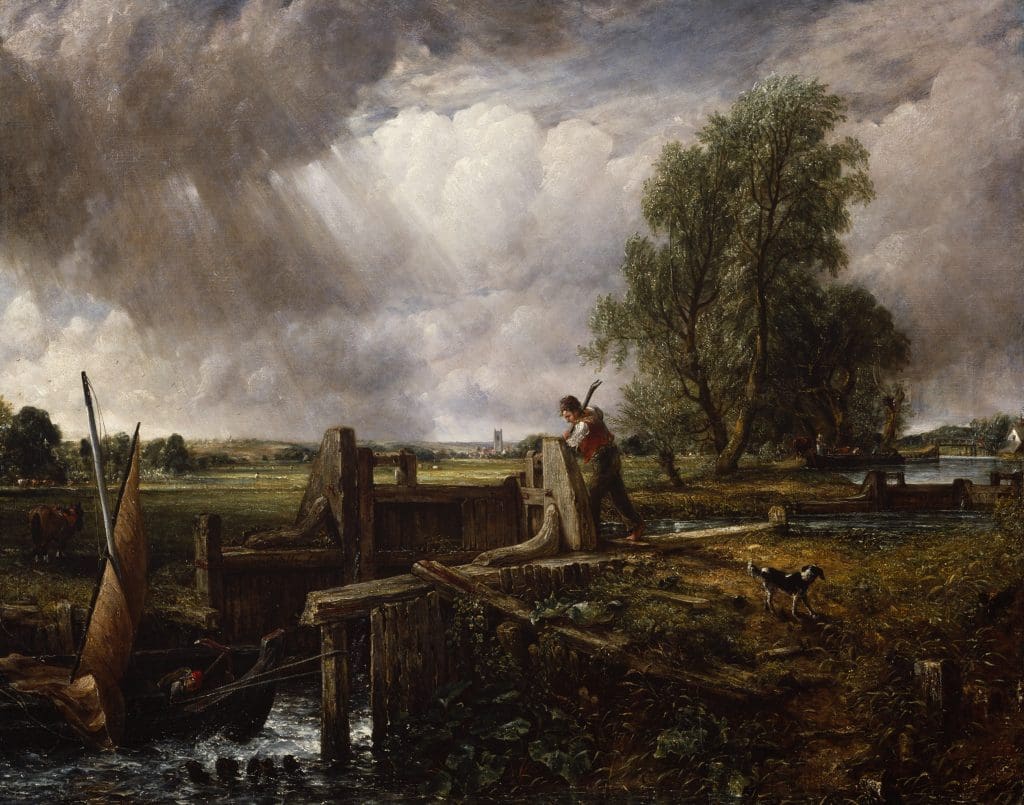
Seemingly effortlessly, he captured the fleeting scene, in which angry black clouds unleash a torrential downpour. The ponderous gravity of Rainstorm over the Sea – which is in the Royal Academy’s own collection – is thought to be related to his distress over the illness of his wife Maria, who died of tuberculosis in November 1828, leaving him to care for seven children under the age of 12.
The Royal Academy is presenting a first survey of the final dozen years of Constable, born in 1776 and who died unexpectedly in his sleep on March 31, 1837. For the artist, apart from Maria’s suffering, these were anything but dark years, and the overcast spells of English weather which were a constant as he worked simply lent fervour to his expansive palette.
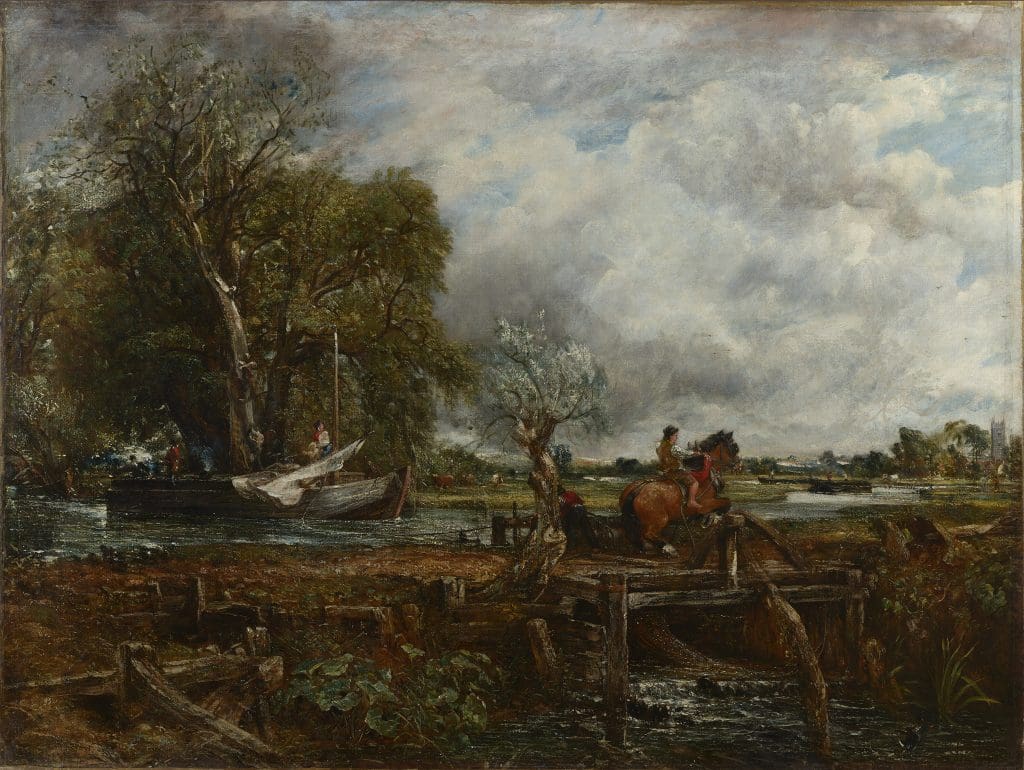
Stemming in part from his meticulous scientific enquiry into his subject matter, the genius of Constable is unfussily manifest here. The Royal Academy is making amends for its early-years reluctance along with other institutions of the day to recognise the measure of the man – who eventually was to be greatly admired by Van Gogh among other giants. It took a quarter of a century before Constable was elected a full Academician, in 1829, and that by a margin of just one vote. Once elected, he played a full and dutiful part in the life of the Academy. He had become a student at the Royal Academy Schools in 1800 at the age of 24, but rewards were slow to materialise. Even his most famous painting The Hay Wain, which in the modern era has been reproduced thousands if not millions of times in posters and placemats, failed to sell at the RA summer exhibition of 1821. The “trouble” was that he took for much of his subject matter workaday country scenes, and these, presented on a grand scale, were far removed from the classical and religious genre favoured by the then art establishment. His skies were populated not by angels and cherubs but were the weathervanes of the agricultural calendar. Constable resolutely focused on England’s spring and summer landscape and its integral importance to country people; as the son of a wealthy corn merchant, he was intimately familiar with the patterns of trade and transport of produce of the land.
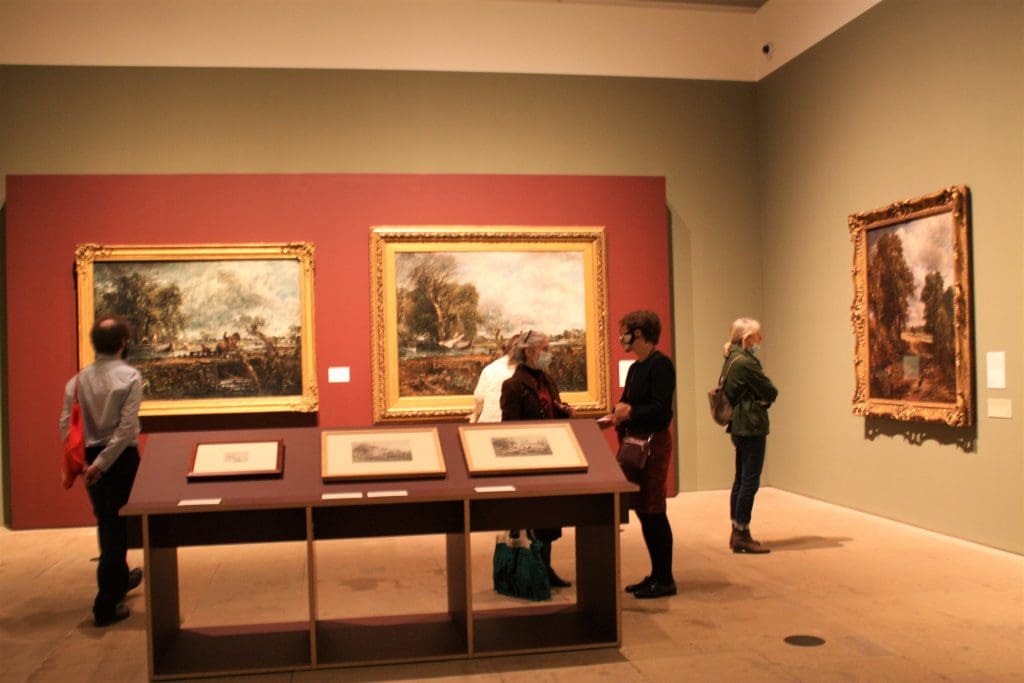
Constable pursued drawing directly from nature and treated it just as farmworkers and mill workers always had an eye to how it would affect their pursuits: people he showed as grafting hard to harness nature to their tasks. However turbulent the day, there was usually indicated a calmer interlude waiting to dispel the storm and often a rainbow confirming the promise.
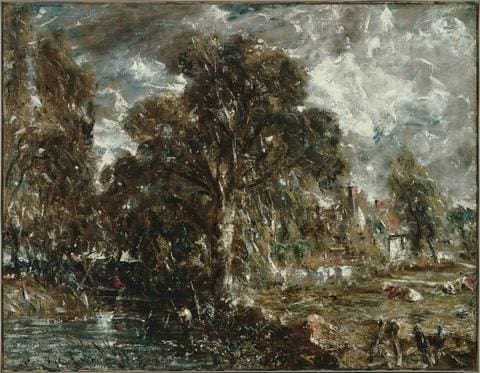
Perhaps the secret of why such scenes appeal to us in the 21st century lies in their otherness to the modern built environment. Scientists now believe that exposure to views of the natural world, especially of sky and ocean, encourage psychological wellbeing. We owe great thanks to the colour blue – a popular choice even for phone and computer screensavers.
His naturalistic scenes were as though of the “raptured mind” which his favourite poet Robert Bloomfield – who was widely popular at the time – described in lines Constable incorporated in Cloud Study with Verses from Bloomfield. This 1830s work, ink on paper, is from the Tate. Bloomfield (1766-1823) was one of the self-taught men known as peasant poets. To go with his illustration Constable transcribed a section from the poem The Farmer’s Boy describing swiftly moving clouds.
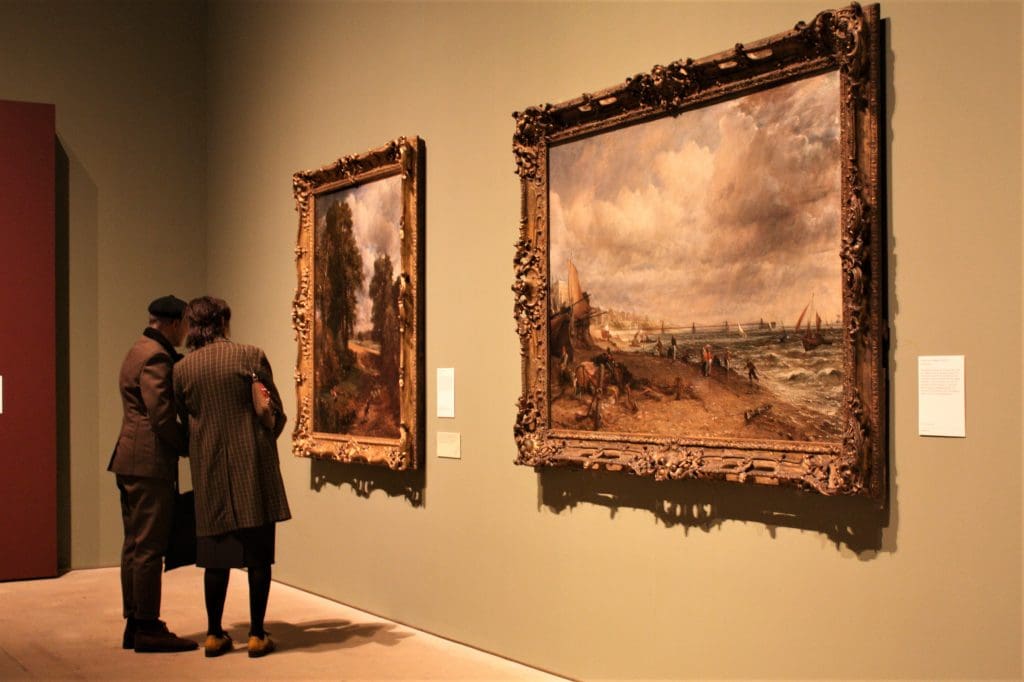
Painted in 1821 and thus outside the ambit of the current show, The Hay Wain has three horses pulling a farm wagon across the River Stour, a channel for busy agricultural commerce, close to Constable’s birthplace in Suffolk. For that painting, he won a gold medal – not from his London peers but at the Paris Salon of 1824. The ultimate impact of such masterpieces has given his native area the sobriquet of “Constable Country.”
Monumental canvasses like that were what Constable called the “six-footers,” and we are treated in the new show to immerse ourselves in some of these together with their full-scale preliminary oil studies. Sketches for the big works such as The Leaping Horse, the last of the six-foot Suffolk canal scenes, show him endowing them with his typically expressive brushwork as he laid the groundwork for the final version, and giving pointers to how he re-ordered representations of trees and other elements to produce more powerful effects.
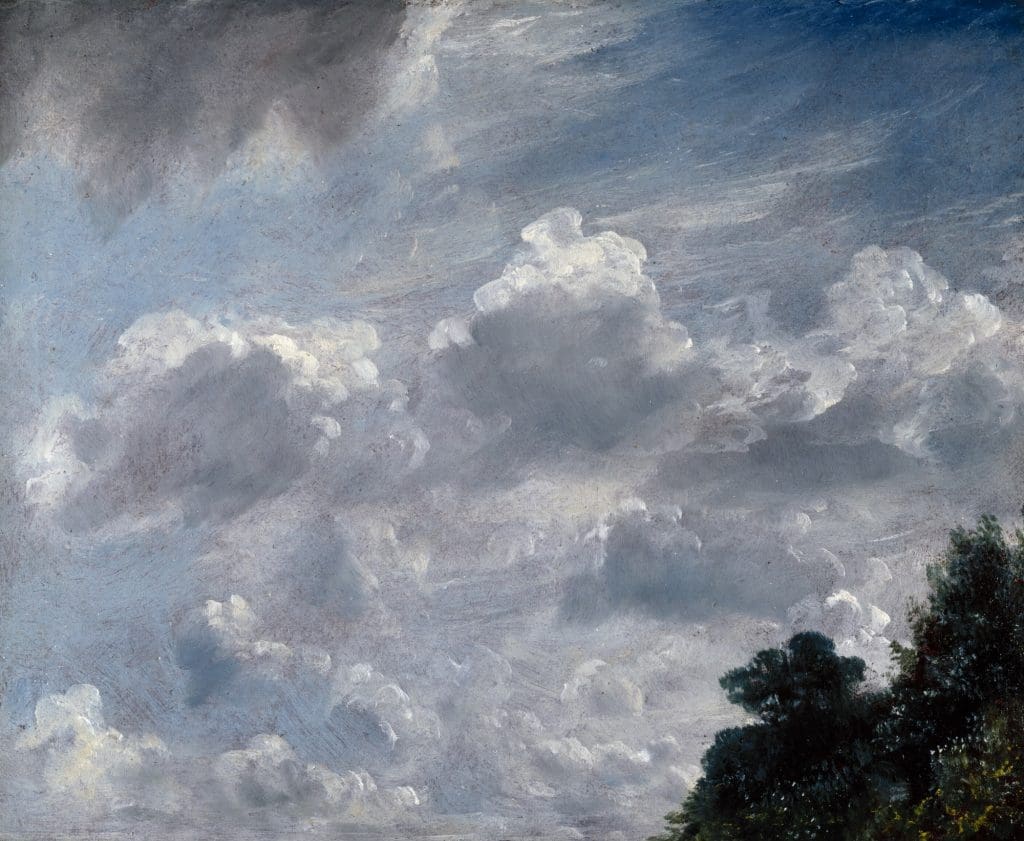
The Leaping Horse sketch, from the Victoria and Albert Museum, is the standout work to open the exhibition’s first section, which covers 1825-1829, with alongside it the 1825 finished work from the Royal Academy’s collection. The RA says: “It is in this painting that, by adding the detail of the tower of Dedham Church, Constable first moved away from the notion of topographical accuracy, which had been a hallmark of his work until that date.”
This section of the show includes exhibition pictures including The Cornfield of 1825 (The National Gallery, London) and Dedham Vale of 1828 (National Galleries of Scotland, Edinburgh), and the artist’s Diploma Work, A Boat Passing a Lock, 1826, presented to the Royal Academy in 1829 on his election as Academician.
In these major canvasses as throughout his oeuvre, his skill in harnessing transitory effects such as passing rainclouds and the play of light on the landscape drew on his open-air studies at Hampstead and Brighton. On the back of the paper, he would keep detailed records of the day, such as direction and speed of wind. He said that nature itself “constantly presents us with compositions of her own far more beautiful than the happiest arranged by human skill” and “the sky is the source of light in nature and governs everything.”

The RA has chosen Rainstorm over the Sea, one of the Brighton sketches, as its promotional poster for the exhibition. On one visit to Brighton, Constable spoke of “the magnificence of the sea” and he was attracted especially by “the breakers and the sky.” The sketch confronts both the expanse of the sea and the majesty of the sky, the storm being challenged by the assertion of a shaft of sunlight. It is thought that he used the end of his brush to bring out the restlessness of the sea.
He later wrote how seabirds “add to the wildness and to the sentiment of melancholy always attendant on the ocean.” In many of his sketches Constable included figures and boats but in the rainstorm study he dispensed with human interest, apart from tiny hints at distant sea traffic.
Patronised by royalty, Brighton was achieving prominence in the 1820s as a fashionable resort. Constable illustrated its popularity in Chain Pier, Brighton, painted in oil on canvas in 1826–7, a loan from the Tate. The town’s suspension pier opened the year before he took lodgings nearby, and he fills the picture with the new attraction, the eventful life of the beach, and fishing boats and commercial shipping as well as new hotels and housing. The pier was destroyed in 1896 in a storm. While fascinated by the breakers and the sky, Constable complained that Brighton was a “Piccadilly-on-Sea” to visitors from London.
The second section of the exhibition presents Constable’s work in the 1830s leading up to his last two exhibition pictures: Cenotaph to the Memory of Sir Joshua Reynolds, 1833-36 (The National Gallery, London) and memorably Arundel Mill and Castle, 1837 (Toledo Museum of Art, Ohio) which encompasses all the detail that is magnificent in Constable. Of his visit to the Sussex spot, he observed: “The Castle is the chief ornament of this place—but all here sinks into insignificance in comparison with the woods and hills…and the trees are beyond everything beautiful.” He adds to the delight by adding children fishing and cattle wandering through the countryside.

Towards the end of his career, Constable renewed his interest in watercolour which he had taken up in the early 1800s. Two exhibition watercolours, Old Sarum, 1834 and Stonehenge, 1835 (both from the Victoria and Albert Museum) command attention. In the way Constable painted Stonehenge, he may have been expressing his unhappiness at a time when both his wife, and his closest friend, John Fisher, had died, and his two eldest sons had left home. The striking painting, in which the ancient stones seem to have a surreal life of their own, was in the Royal Academy Summer Exhibition of 1836. Some of the lines, perhaps written by Constable himself, in the catalogue describe “the mysterious monument of Stonehenge, standing remote on a bare and boundless heath.”
In addition to Constable’s preparatory drawings and plein-air sketches, in this section we are reminded that Suffolk was ever in his heart, as in his drawing View on the Stour, from around 1836 (Victoria and Albert Museum).
Ever experimental, late in life Constable explored printmaking with a series of mezzotints, designed to promote his use of light and shade. He enjoyed close collaboration with his printmaker, David Lucas, as shown in proofs for the final print of the series, Vignette: Hampstead Heath (from the Fitzwilliam Museum, Cambridge), of 1829.
The exhibition is lucidly curated by Annie Lyles, former curator at Tate Britain, and Royal Academy curator Per Rumberg.
Captions in detail:
Rainstorm over the Sea. Oil on paper laid on canvas. ca. 1824-1828. Royal Academy of Arts, London. Photo © Royal Academy; photographer John Hammond.
A Boat passing a Lock. Oil on canvas, 1826. Royal Academy. Photo © Royal Academy, photographer Prudence Cuming Associates Ltd.
The Leaping Horse. Oil on canvas. 1825. Royal Academy. Photo © Royal Academy; photographer Prudence Cuming Associates Ltd.
Installation view with The Leaping Horse.
On the River Stour. Oil on canvas. ca. 1834-1837. The Phillips Collection, Washington DC, acquired 1925. Photo © The Phillips Collection, Washington.
Chain Pier, Brighton, installation view.
Cloud Study, Hampstead, Tree at Right, Oil on paper laid on board, red ground. September 11, 1821. Royal Academy. Photo © Royal Academy. Photographer John Hammond.
Stonehenge. Watercolour. 1835. Victoria and Albert Museum. Bequeathed by Isabel Constable, daughter of the artist. Photo © Victoria and Albert Museum.
Late Constable runs until February 13, 2022. Advance booking is essential, including for Friends of the RA. All visitors must have a pre-booked timed ticket, which can be booked at royalacademy.org.uk or by phone (0207 300 8090).





